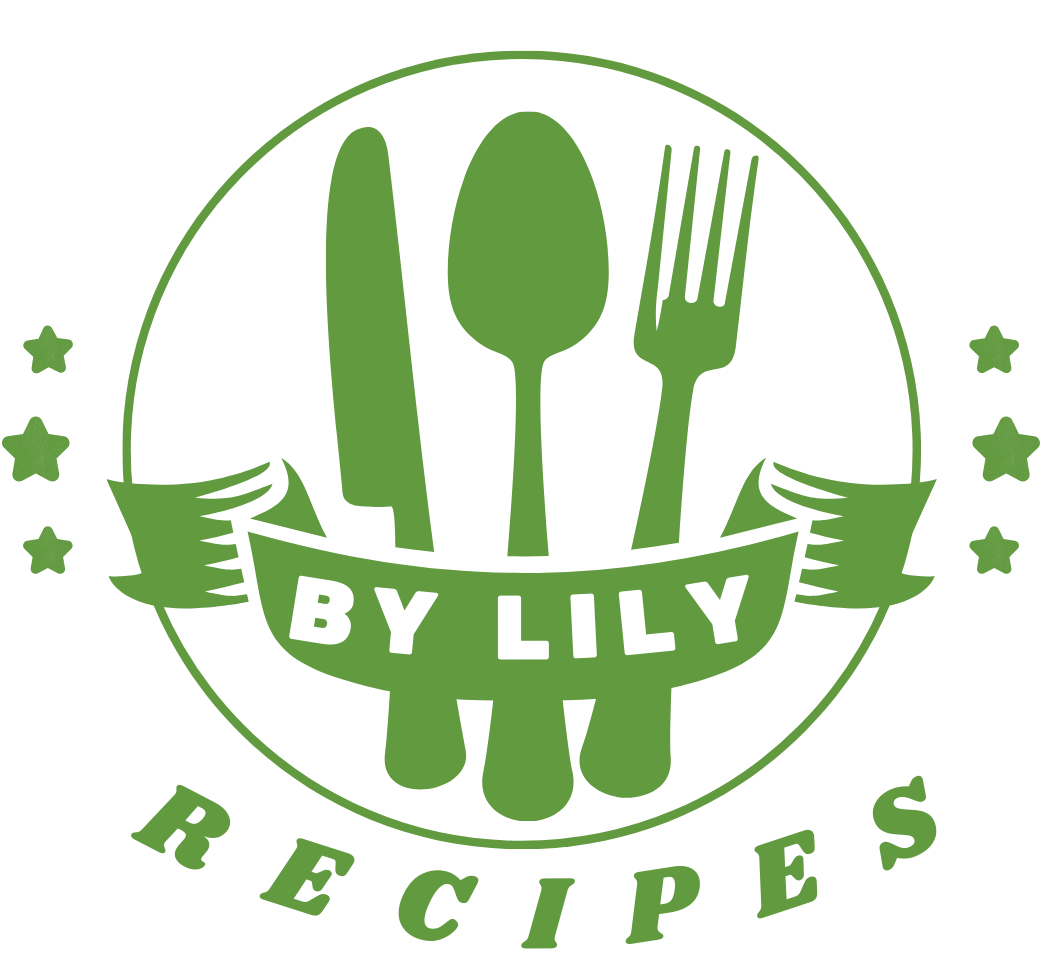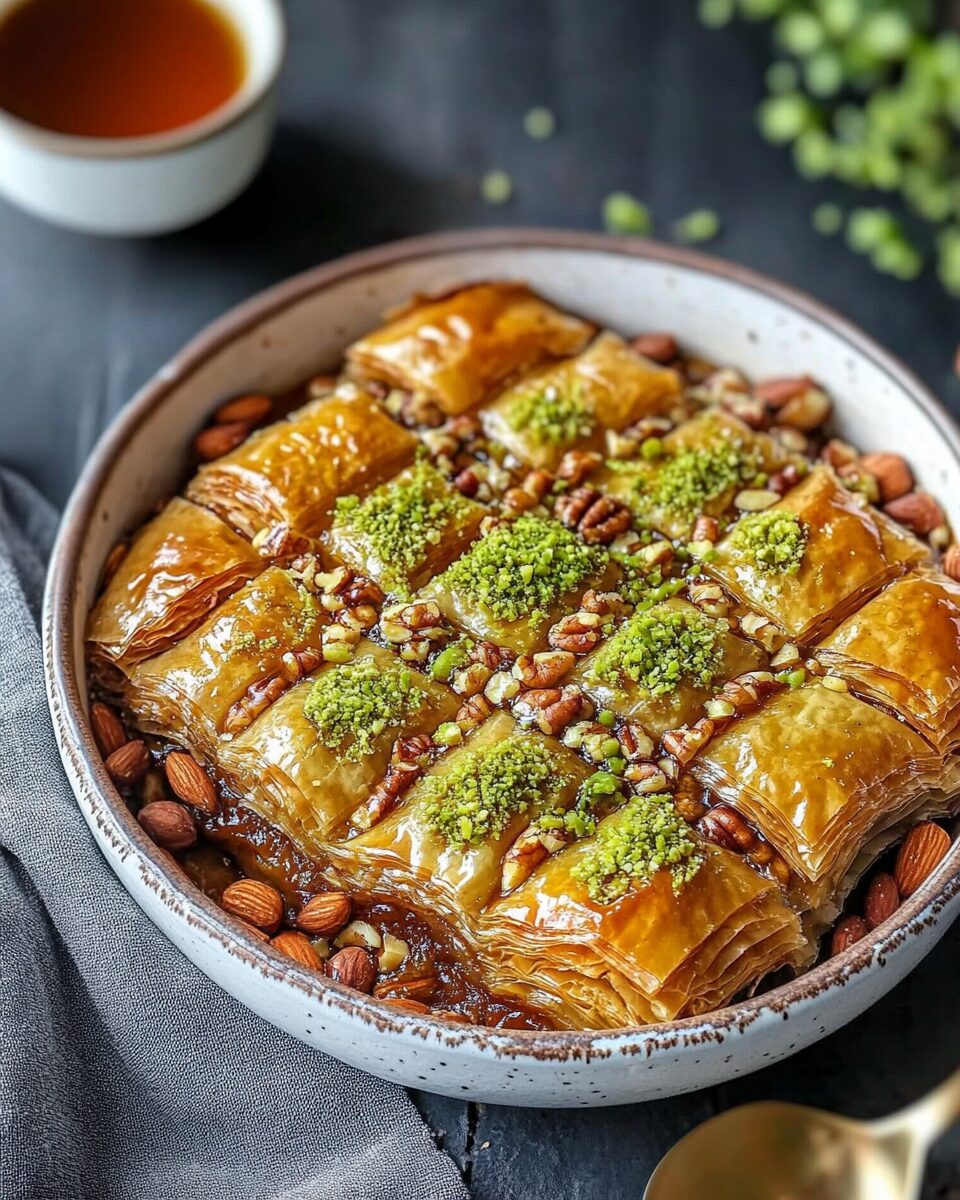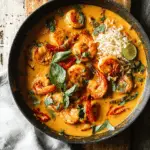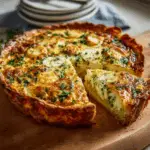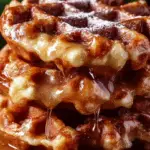Why Baklava is a Must-Try Dessert
Baklava is one of the most beloved desserts in Middle Eastern and Mediterranean cuisine. Its delicate layers, rich syrup, and nutty filling create a satisfying contrast of textures and flavors. Unlike cakes or cookies, baklava has a uniquely crispy, caramelized exterior that absorbs the aromatic honey syrup, making each bite irresistibly indulgent.
This dessert is authentic and traditional, carrying a rich history spanning over centuries. The paper-thin layers of phyllo dough become light and crisp when baked with butter, creating a texture that is both delicate and satisfying. Naturally sweetened with honey, baklava offers a balanced sweetness that isn’t overpowering, making it a perfect alternative to overly sugary desserts.
The recipe is also incredibly versatile and customizable. Whether you prefer pistachios, walnuts, almonds, or even hazelnuts, the nut mixture can be adjusted to your taste. Some variations incorporate spices like cinnamon and cardamom, adding a warm and aromatic depth to the filling.
The Key Elements of a Perfect Baklava
Phyllo dough is the foundation of baklava, creating ultra-thin, crisp layers when baked with butter. Because phyllo is naturally dry, handling it correctly is essential to prevent tearing or cracking. Keeping the sheets covered with a damp towel helps prevent them from drying out, while brushing each layer with melted butter ensures a golden, flaky crust.
The filling of baklava consists of finely chopped nuts, which add crunch and a rich, earthy flavor. Popular choices include pistachios, known for their vibrant green color and slightly sweet taste, walnuts, which add a mild bitterness, and almonds, which provide a subtle nuttiness. For an extra burst of flavor, many recipes incorporate cinnamon, cardamom, or cloves into the nut mixture, enhancing the overall aroma of the dish.
The syrup is what gives baklava its signature sweetness and moisture. A classic baklava syrup is made with sugar, honey, water, and lemon, often infused with cinnamon sticks for a warm, spiced undertone. The key to perfecting this step is allowing the syrup to cool before pouring it over the hot, freshly baked baklava. This technique ensures that the layers soak up the syrup evenly while maintaining their crispiness.
Regional Variations of Baklava
Baklava is enjoyed in many cultures, each with its own unique twist on the classic dessert. Turkish baklava is often made with pistachios and uses a simple honey syrup, resulting in a lighter and crispier texture. Greek baklava typically features walnuts and is flavored with cinnamon and cloves, while Lebanese baklava incorporates rose water or orange blossom water for a fragrant floral note.
Persian baklava is distinguished by its infusion of saffron and cardamom, adding a distinctive depth of flavor. Armenian baklava includes nutmeg and cloves in the nut mixture, making it slightly spicier and more aromatic than other variations. Each type of baklava offers a unique experience, yet all share the same delicious combination of flaky pastry, sweet syrup, and crunchy nuts.
Serving Suggestions for Baklava
Baklava is best enjoyed fresh, once it has fully absorbed the syrup. It pairs beautifully with tea or coffee, as the bitterness of Turkish coffee, espresso, or black tea helps balance the sweetness of the dessert. It also complements a scoop of vanilla or pistachio ice cream, adding a creamy contrast to the crispy layers. Greek yogurt is another excellent accompaniment, as its tanginess offsets the richness of the baklava, making it a lighter option.
Drizzling extra honey over baklava enhances its natural sweetness, and for those who enjoy a little extra indulgence, a sprinkle of chopped pistachios on top adds an elegant finishing touch.
Why This Dish is Perfect for Any Occasion
Baklava is often associated with festive and religious celebrations, making it an ideal dessert for special moments. Whether you’re preparing it for Eid, Ramadan, Christmas, or a wedding, baklava symbolizes hospitality and generosity. It also makes for a thoughtful homemade gift, as it stays fresh for days and travels well.
For casual indulgence, baklava is perfect as an after-dinner treat or a sweet midday snack. It can be made in advance and stored for later, making it a convenient option for entertaining guests. Its rich, satisfying taste means that a small portion is enough to satisfy sweet cravings, making it an excellent dessert to share.
Common Mistakes to Avoid When Making Baklava
Using too much syrup can cause baklava to become overly soggy, losing its signature crispiness. To prevent this, always pour cooled syrup over the hot pastry, allowing it to absorb evenly. Another mistake is not buttering the phyllo layers properly. Each sheet should be brushed with butter to achieve a golden, flaky texture.
Cutting baklava after baking can lead to uneven layers and messy pieces. It’s best to cut the pastry into diamond or square shapes before baking, ensuring clean edges and even syrup distribution. Lastly, rushing the resting process can impact the final texture. Baklava needs at least four to five hours, or preferably overnight, to fully absorb the syrup and develop its rich flavors.
How to Store and Keep Baklava Fresh
Baklava can be stored at room temperature in an airtight container for up to two weeks. It does not require refrigeration, but keeping it in a cool, dry place ensures that it retains its crispiness. If refrigerated, baklava can last up to three weeks, though the layers may soften slightly. For long-term storage, baklava can be frozen for up to three months. Wrapping it tightly in parchment paper and foil helps preserve its freshness. Thawing at room temperature before serving allows the flavors to fully develop.
Conclusion
Baklava is a truly timeless dessert that combines crisp layers of phyllo dough, crunchy nuts, and aromatic honey syrup. Whether you prefer it light and flaky or rich and syrupy, this homemade baklava recipe captures the essence of this beloved Middle Eastern and Mediterranean classic.
With its perfect balance of sweetness, texture, and flavor, baklava is a dessert that can be shared, gifted, or enjoyed as a personal indulgence. Once you try making it at home, you’ll understand why this golden, nut-filled pastry has remained a favorite for generations.
